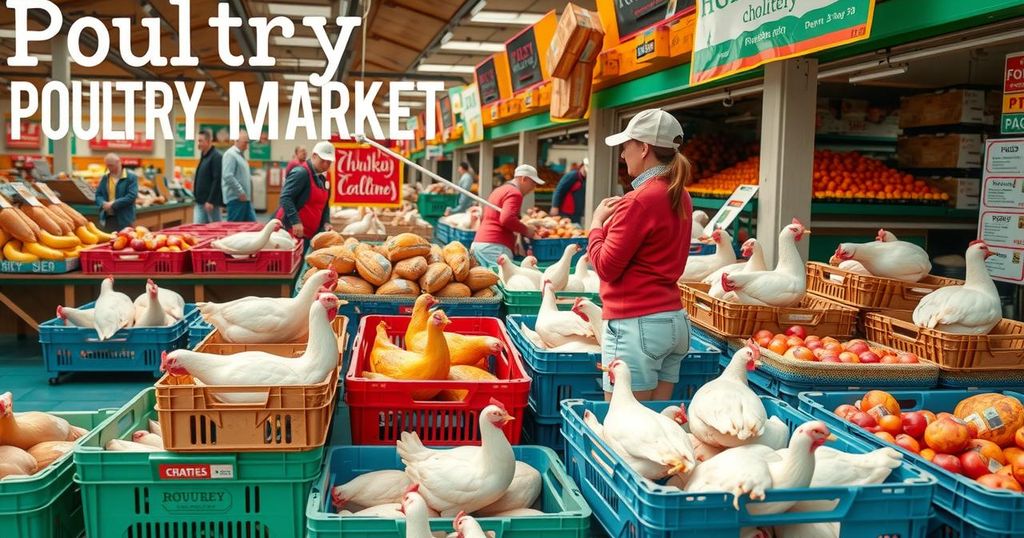The Saudi Arabia Poultry Meat Market is projected to grow from USD 4.75 billion in 2024 to USD 5.62 billion by 2033, driven by urbanization, income growth, and rising demand for halal poultry. Government initiatives supporting local production and food security, alongside expanding retail sectors, are pivotal to this growth. However, increasing competition and changing consumer preferences pose challenges for producers.
The “Saudi Arabia Poultry Meat Market Size and Share Analysis – Growth Trends and Forecast Report 2025-2033” indicates that the market is projected to grow from USD 4.75 billion in 2024 to USD 5.62 billion by 2033, with a CAGR of 1.90%. This growth is attributed to factors such as urbanization, increasing disposable incomes, evolving consumer preferences, enhanced food processing capabilities, and government initiatives aimed at food security, specifically for high-quality, halal-certified products.
Saudi Arabia’s poultry sector is vital for the nation’s food economy due to its growing population and demand for affordable protein sources. The country leads the Gulf Cooperation Council as the largest purchaser of poultry, where urbanization and increased discretionary income have driven consumer preference towards chicken meat, perceived as a less expensive alternative to red meat. This trend is reinforced by the rise in ready-to-eat poultry products amid busy urban lifestyles.
The Saudi government significantly supports the poultry sector through investment programs aimed at boosting production and sustainability. These efforts include the modernization of processing facilities and technological advancements in poultry farming, which have augmented local output, thus reducing dependence on imports and improving food security.
Halal certification remains essential as Saudi Arabia is predominantly Muslim, ensuring that poultry products align with cultural and religious sentiments. The adherence to these standards increases consumer trust, fostering strong market growth both domestically and abroad by addressing the halal goods demand.
The expansion of the retail and foodservice sectors has amplified the accessibility of poultry products in Saudi Arabia. Fast-food chains, supermarkets, and hypermarkets provide consumers with various chicken products, thus enhancing the market for poultry meat while offering producers new growth opportunities.
Competition in the Saudi poultry market has intensified as more manufacturers strive to meet growing demand. This saturation results in price wars, challenging smaller producers and inviting increased foreign competition, particularly from countries with lower production costs, which can compromise market share for local businesses.
As health awareness among consumers rises, there is a notable shift towards healthier options, including plant-based substitutes and lean meats. Producers are thus tasked with adapting to evolving consumer needs by offering healthier poultry products or exploring diversification into alternative protein sources to maintain their competitive edge.
The report also outlines key players in the sector, including Al-Watania Poultry, Almarai Food Company, and BRF S.A., among others, and covers core aspects such as dynamics, trends, and projections within the poultry market.
The Saudi poultry meat industry is set for significant growth, driven by urbanization, consumer demand for halal products, and government initiatives enhancing food security. A burgeoning population, supporting infrastructure, and increased local production capabilities position the market as a vital component of the national economy. However, producers must navigate rising competition, price pressures, and shifting consumer preferences towards healthier options. The insights from leading firms will be crucial as the sector evolves amid these dynamics.
Original Source: www.globenewswire.com




